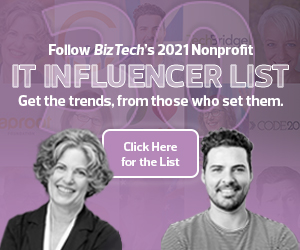Infrastructure Considerations for Recurring Donations
A key factor around accepting donations, recurring or otherwise, is the need to create an adaptable infrastructure that can reach potential donors on a regular, rather than periodic, basis.
A good comparison point within the nonprofit space is the dues associations must accept from their members, which are often annual in nature, and tend to be focused on the convenience of the organization.
Unlike associations, charitable nonprofits lean into donations rather than annual membership dues. Molly Boncaro, a senior vice president with the United Way, notes in a Salesforce blog post that annual donation strategies often leave donors in the dark.
“In an annual campaign environment, donors are cut off from the specific actions nonprofits are taking throughout the year in that specific location,” Boncaro writes. “Donors receive a request to donate to an organization, and they may have no real insight into what that organization is doing or has done throughout the year. Instead, the request is tied to the donor’s general perception of what the nonprofit does, such as feeding the hungry or providing relief after a disaster.”
With recurring donations, organizations are no longer working up to the “big ask” — instead, they deal with consistent charges coming in on a regular basis — and that might require a rethink of applications and processes. For example, your accounting and finance software might need an upgrade, but so too might customer relationship management (CRM) tools such as Microsoft Dynamics 365. And you might need to send a lot more emails throughout the year.
RELATED: Find out how a CRM system can benefit your nonprofit organization.
Building Around Conversion
It’s one thing to support recurring donations; it’s another to bring those donors into the fold.
Many organizations choose to use marketing messages that target potential long-term donors. One potential target area for such messaging? The one-time donors that your organization pulls in during its end-of-year donation strategies, especially those around Giving Tuesday.
By leveraging the data you have around them through business intelligence or analytics, you can uncover ways to make an effective messaging case for recurring donations over time. A notification, social media post or an email sent at just the right time could be the right spark to building a long-term relationship.
As Sam Bassett, business development manager for CDW’s nonprofit practice, noted last fall, recurring donations often end up being more valuable to an organization in the long run, even if the impact feels smaller to the donor.
“Let’s say somebody gives me $100, or $10 a month,” he said. “I’d rather have $10 a month, because that person’s buying into my organization. I can have them give more later, mention it to a friend — plus, over the course of a year, it’s $120.”












